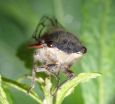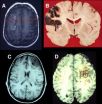(Press-News.org) PORTLAND, Ore., August 28, 2014 — A new study finds that women who are obese can limit their weight gain during pregnancy using conventional weight loss techniques including attending weekly group support meetings, seeking advice about nutrition and diet, and keeping food and exercise journals.
Results of the Healthy Moms study, published in Obesity, also show that obese women who limit their weight gain during pregnancy are less likely to have large-for-gestational age babies which can complicate delivery and increase the baby's risk of becoming obese later in life.
"Most interventions to limit weight gain among obese women during pregnancy have failed, but our study shows that with regular contact and support, these women can limit the amount of weight they gain, which will also reduce the risk of complications during and after pregnancy," said author Kim Vesco, MD, MPH, a practicing obstetrician/gynecologist and clinical investigator with the Kaiser Permanente Center for Health Research in Portland, Oregon.
Excessive weight gain during pregnancy has been linked to complications such as preeclampsia, gestational diabetes, an increased rate of C-sections, birthing injuries and weight retention after pregnancy.
Commonly used guidelines from experts at the Institute of Medicine suggest that women who are obese gain between 11 and 20 pounds during pregnancy. Based on observational studies that suggest weight maintenance or limited weight gain may result in better pregnancy outcomes, the Healthy Moms study advises obese women to maintain their weight during pregnancy.
"Most women in our intervention did gain some weight, but they gained and retained significantly less than women who did not participate in the intervention," said Dr. Vesco. "Even with support, it's difficult to limit weight gain during pregnancy, so women who are overweight or obese should aim for the lower end of the weight-gain range recommended by the Institute of Medicine, and they should seek support and nutritional advice to help meet their goals."
The Healthy Moms study included 114 obese women who are Kaiser Permanente Northwest members. Women who are obese have a body mass index of 30 and above—a woman who is 5 feet 5 inches tall would be considered obese at 180 pounds.
Half of the women participated in an intensive weight management program that included weekly group meetings, weigh-ins, personalized caloric goals, and food and exercise diaries. The other women were placed in a usual care group consisting of one meeting with a dietitian at which they received general information about diet and exercise for a healthy pregnancy.
By 34 weeks of pregnancy women who participated in the intensive, weekly group intervention had gained an average of 11 pounds, compared to 18 pounds for women who did not participate in the intervention. Two weeks after delivery, participants in the intervention weighed approximately 6 pounds less than they did when they were brought into the study, compared to an average weight gain of 3 pounds for women who did not participate in the intervention.
Women in both groups had about the same number of birthing and delivery complications, but only 9 percent of women in the intervention had large-for-gestational age babies, compared to 26 percent of women in the control group. These babies usually grow too fast in the womb, and at birth they weigh more than 90 percent of babies of the same sex and gestational age. For example, a baby boy born at 40 weeks would be considered large for his gestational age if he weighed more than 9 pounds, 3 ounces.
The intervention showed no adverse effects on pregnancy outcomes, but researchers say a larger study is needed to confirm this finding and to understand more about the impact of limited weight gain or weight loss on pregnancy outcomes.
INFORMATION:
This study was funded by a grant from the National Institute of Child Health and Human Development. (RO1HD058061)
Authors include: Kimberly K. Vesco, MD, MPH, Njeri Karanja, PhD, Michael C. Leo, PhD, Nancy Perrin, PhD, Sabina Smith, BS, CCRP, and Victor J. Stevens, PhD, from the Kaiser Permanente Center for Health Research in Portland, Oregon; Janet C. King, PhD, from Children's Hospital Oakland Research Institute in Oakland, California; Matthew W. Gillman, MD, from Obesity Prevention Program, Harvard Medical School in Boston; Cindy T. McEvoy, MD, MCR, from Oregon Health & Science University in Portland, Oregon; and Cara L. Eckhardt, PhD, from the School of Community Health at Portland State University in Portland, Oregon.
About the Kaiser Permanente Center for Health Research
Kaiser Permanente's Center for Health Research, founded in 1964, is a nonprofit research institution dedicated to advancing knowledge to improve health. It has research sites in Portland, Oregon, Honolulu, Hawaii, and Atlanta, Georgia.
About Kaiser Permanente
Kaiser Permanente is committed to helping shape the future of health care. We are recognized as one of America's leading health care providers and not-for-profit health plans. Founded in 1945, our mission is to provide high-quality, affordable health care services and to improve the health of our members and the communities we serve. We currently serve approximately 9.5 million members in eight states and the District of Columbia. Care for members and patients is focused on their total health and guided by their personal physicians, specialists and team of caregivers. Our expert and caring medical teams are empowered and supported by industry-leading technology advances and tools for health promotion, disease prevention, state-of-the-art care delivery and world-class chronic disease management. Kaiser Permanente is dedicated to care innovations, clinical research, health education and the support of community health. For more information, go to: kp.org/share.
Healthy Moms program helps women who are obese limit weight gain during pregnancy
Study suggests that managing weight gain during pregnancy may reduce the potential of birth complications and health issues
2014-08-28
ELSE PRESS RELEASES FROM THIS DATE:
University of Montana cicada study discovers 2 genomes that function as 1
2014-08-28
MISSOULA, Mont. – Two is company, three is a crowd. But in the case of the cicada, that's a good thing.
Until a recent discovery by a University of Montana research lab, it was thought that cicadas had a symbiotic relationship with two important bacteria that live within the cells of its body. Since the insect eats a simple diet consisting solely of plant sap, it relies on these bacteria to produce the nutrients it needs for survival.
In exchange, those two bacteria, Hodgkinia and Sulcia, live comfortably inside the cicada. Since all three divvy up the nutritional roles, ...
Non-adaptive evolution in a cicada's gut
2014-08-28
Organisms in a symbiotic relationship will often shed genes as they come to rely on the other organism for crucial functions. But now researchers have uncovered an unusual event in which a bacterium that lives in a type of cicada split into two species, doubling the number of organisms required for the symbiosis to survive.
Cicadas of the genus Tettigades feed only on sap they suck out of plants. To create some of the essential amino acids they rely on two bacterial helpers — Candidatus Hodgkinia cicadicola and Candidatus Sulcia muelleri — with which they have lived in ...
How studying damage to the prefrontal lobe has helped unlock the brain's mysteries
2014-08-28
Until the last few decades, the frontal lobes of the brain were shrouded in mystery and erroneously thought of as nonessential for normal function—hence the frequent use of lobotomies in the early 20th century to treat psychiatric disorders. Now a review publishing August 28 in the Cell Press journal Neuron highlights groundbreaking studies of patients with brain damage that reveal how distinct areas of the frontal lobes are critical for a person's ability to learn, multitask, control their emotions, socialize, and make real-life decisions. The findings have helped experts ...
Circulating tumor cell clusters more likely to cause metastasis than single cells
2014-08-28
Circulating tumor cell (CTC) clusters – clumps of from 2 to 50 tumor cells that break off a primary tumor and are carried through the bloodstream – appear to be much more likely to cause metastasis than are single CTCs, according to a study from investigators at the Massachusetts General Hospital (MGH) Cancer Center. Their report in the August 28 issue of Cell also suggests that a cell adhesion protein binding CTC clusters together is a potential therapeutic target.
"While CTCs are considered to be precursors of metastasis, the significance of CTC clusters, which are ...
NYU researchers ID process producing neuronal diversity in fruit flies' visual system
2014-08-28
New York University biologists have identified a mechanism that helps explain how the diversity of neurons that make up the visual system is generated.
"Our research uncovers a process that dictates both timing and cell survival in order to engender the heterogeneity of neurons used for vision," explains NYU Biology Professor Claude Desplan, the study's senior author.
The study's other co-authors were: Claire Bertet, Xin Li, Ted Erclik, Matthieu Cavey, and Brent Wells—all postdoctoral fellows at NYU.
Their work, which appears in the latest issue of the journal Cell, ...
Zombie bacteria are nothing to be afraid of
2014-08-28
VIDEO:
Heidi Arjes of Washington University in St. Louis explains how the failsafes in the bacterial cell cycle work. A bacterium that fails to pass either failsafe enters a zombified state...
Click here for more information.
A cell is not a soap bubble that can simply pinch in two to reproduce. The ability to faithfully copy genetic material and distribute it equally to daughter cells is fundamental to all forms of life. Even seemingly simple single-celled organisms must have ...
Research shows how premalignant cells can sense oncogenesis and halt growth
2014-08-28
Cold Spring Harbor, NY -- What happens inside cells when they detect the activation of a cancer-inducing gene? Sometimes, cells are able to signal internally to stop the cell cycle. Such cells are able to enter, at least for a time, a protective non-growth state.
Since the 1980s, scientists have known that mutations in a human gene called RAS are capable of setting cells on a path to cancer. Today, a team at Cold Spring Harbor Laboratory (CSHL) publishes experiments showing how cells can respond to an activated RAS gene by entering a quiescent state, called senescence.
CSHL ...
Computer games give a boost to English
2014-08-28
If you want to make a mark in the world of computer games you had better have a good English vocabulary. It has now also been scientifically proven that someone who is good at computer games has a larger English vocabulary. This is revealed by a study at the University of Gothenburg and Karlstad University, Sweden.
The study confirms what many parents and teachers already suspected: young people who play a lot of interactive English computer games gain an advantage in terms of their English vocabulary compared with those who do not play or only play a little.
The study ...
NASA's TRMM satellite adds up Cristobal's heavy rainfall in the Caribbean
2014-08-28
The Caribbean Islands of Turks and Caicos were drenched from Tropical Storm Cristobal before the storm moved north and intensified into a hurricane. NASA's TRMM satellite added up the rainfall and revealed the soaking those islands received.
The Tropical Rainfall Measuring Mission or TRMM satellite is like a flying rain gauge in space. It can estimate rainfall throughout storms on Earth from its orbit around the planet. TRMM is managed by both NASA and the Japan Aerospace Exploration Agency known as JAXA and has been in orbit since 1997 covering the tropics.
At NASA's ...
Study finds marine protected areas inadequate for protecting fish and ocean ecology
2014-08-28
A new study reports that an expansion of marine protected areas is needed to protect fish species that perform key ecological functions. According to investigators from the Wildlife Conservation Society and other organizations, previous efforts at protecting fish have focused on saving the largest numbers of species, often at the expense of those species that provide key and difficult-to-replace ecological functions.
Many vital ecological functions of ocean ecology are performed by fish species that also are food for millions of people. This study uncovers a significant ...
LAST 30 PRESS RELEASES:
What causes some people’s gut microbes to produce high alcohol levels?
Global study reveals widespread burning of plastic for heating and cooking
MIT study shows pills that communicate from the stomach could improve medication adherence
Searching for the centromere: diversity in pathways key for cell division
Behind nature’s blueprints
Researchers search for why some people’s gut microbes produce high alcohol levels
Researchers find promising new way to boost the immune response to cancer
Coffee as a staining agent substitute in electron microscopy
Revealing the diversity of olfactory receptors in hagfish and its implications for early vertebrate evolution
Development of an ultrasonic sensor capable of cuffless, non-invasive blood pressure measurement
Longer treatment with medications for opioid use disorder is associated with greater probability of survival
Strategy over morality can help conservation campaigns reduce ivory demand, research shows
Rising temperatures reshape microbial carbon cycling during animal carcass decomposition in water
Achieving ultra-low-power explosive jumps via locust bio-hybrid muscle actuators
Plant-derived phenolic acids revive the power of tetracycline against drug-resistant bacteria
Cooperation: A costly affair in bacterial social behaviour?
Viruses in wastewater: Silent drivers of pollution removal and antibiotic resistance
Sub-iethal water disinfection may accelerate the spread of antibiotic resistance
Three in four new Australian moms struggle with body image
Post-stroke injection protects the brain in preclinical study
Cardiovascular risk score predicts multiple eye diseases
Health: estimated one in ten British adults used or interested in GLP-1 medications for weight loss
Exercise to treat depression yields similar results to therapy
Whooping cough vaccination for pregnant women strengthens babies’ immune system
Dramatic decline in new cases of orphanhood in Uganda driven by HIV treatment and prevention programs
Stopping weight loss drugs linked to weight regain and reversal of heart health markers
Higher intake of food preservatives linked to increased cancer risk
Mass General Brigham–developed cholera vaccine completes phase 1 trial
First experimental validation of a “150-year-old chemical common sense” direct visualization of the molecular structural changes in the ultrafast anthracene [4+4] photocycloaddition reaction
Lack of support for people on weight loss drugs leaves them vulnerable to nutritional deficiencies, say experts
[Press-News.org] Healthy Moms program helps women who are obese limit weight gain during pregnancyStudy suggests that managing weight gain during pregnancy may reduce the potential of birth complications and health issues







